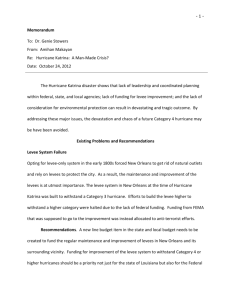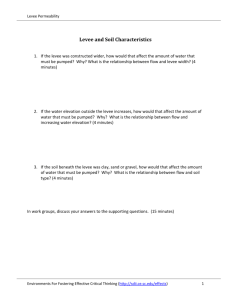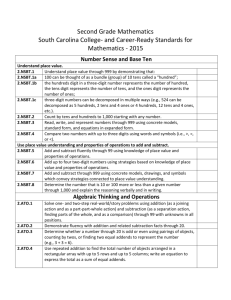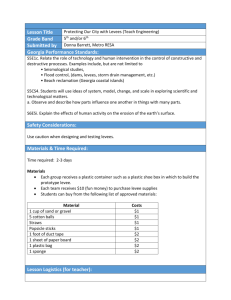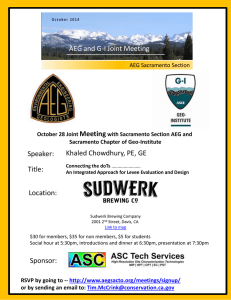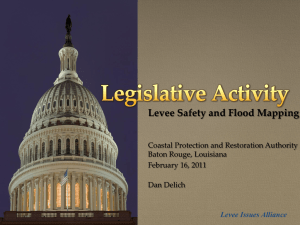Pendleton Elementary
advertisement
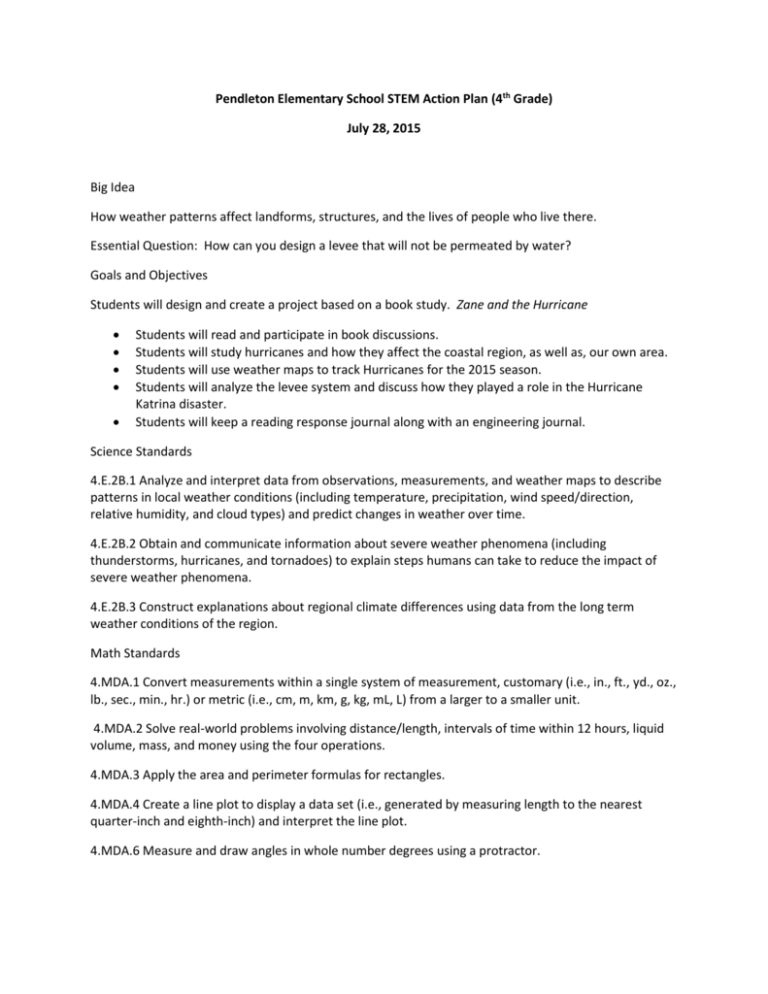
Pendleton Elementary School STEM Action Plan (4th Grade) July 28, 2015 Big Idea How weather patterns affect landforms, structures, and the lives of people who live there. Essential Question: How can you design a levee that will not be permeated by water? Goals and Objectives Students will design and create a project based on a book study. Zane and the Hurricane Students will read and participate in book discussions. Students will study hurricanes and how they affect the coastal region, as well as, our own area. Students will use weather maps to track Hurricanes for the 2015 season. Students will analyze the levee system and discuss how they played a role in the Hurricane Katrina disaster. Students will keep a reading response journal along with an engineering journal. Science Standards 4.E.2B.1 Analyze and interpret data from observations, measurements, and weather maps to describe patterns in local weather conditions (including temperature, precipitation, wind speed/direction, relative humidity, and cloud types) and predict changes in weather over time. 4.E.2B.2 Obtain and communicate information about severe weather phenomena (including thunderstorms, hurricanes, and tornadoes) to explain steps humans can take to reduce the impact of severe weather phenomena. 4.E.2B.3 Construct explanations about regional climate differences using data from the long term weather conditions of the region. Math Standards 4.MDA.1 Convert measurements within a single system of measurement, customary (i.e., in., ft., yd., oz., lb., sec., min., hr.) or metric (i.e., cm, m, km, g, kg, mL, L) from a larger to a smaller unit. 4.MDA.2 Solve real-world problems involving distance/length, intervals of time within 12 hours, liquid volume, mass, and money using the four operations. 4.MDA.3 Apply the area and perimeter formulas for rectangles. 4.MDA.4 Create a line plot to display a data set (i.e., generated by measuring length to the nearest quarter-inch and eighth-inch) and interpret the line plot. 4.MDA.6 Measure and draw angles in whole number degrees using a protractor. 4.MDA.7 Solve addition and subtraction problems to find unknown angles in real-world and mathematical problems. 4.MDA.8 Determine the value of a collection of coins and bills greater than $1.00. Timeline This project will take place during the fall and will be related to the Hurricane season. Assessments Formative assessments will be given to monitor student progress. Group Assessment Rubrics for weather maps and project Resources WYFF 4 Weather Tracker Maps Scholastic Hurricane Katrina http://teacher.scholastic.com/scholasticnews/indepth/hurricanekatrina/ History Channel – Hurricane Katrina http://www.history.com/topics/hurricane-katrina National Geographic – Levees http://education.nationalgeographic.com/encyclopedia/levee/ Teaching Engineering Unit https://www.teachengineering.org/view_activity.php?url=collection/cub_/activities/cub_weath er/cub_weather_lesson05_activity1.xml Materials Levee Design Worksheet, one per group rectangular plastic container or tub scissors, to poke holes in cups $10 worth of fun money (for example, strips of paper that each represent one dollar or Monopoly® money) levee building materials: - sand or gravel (about 2 cups) - duct tape (about 1 ft) -8-10 cotton balls 1 plastic sandwich bag or square of Saran® wrap -1 sponge -8-10 popsicle sticks -8-10 plastic drinking straws -paperboard (1 sheet, such as from a cereal box) -small paper cups (note: remember to update the Levee Design Worksheet with any changes made) Access to water to test the levees Learning Experiences Students will examine the effects of flooding by creating a landscape and then pouring water into it to simulate a flood. Students will by test earth materials to see if they are permeable. Students will design and construct a levee system to protect their landscape.

